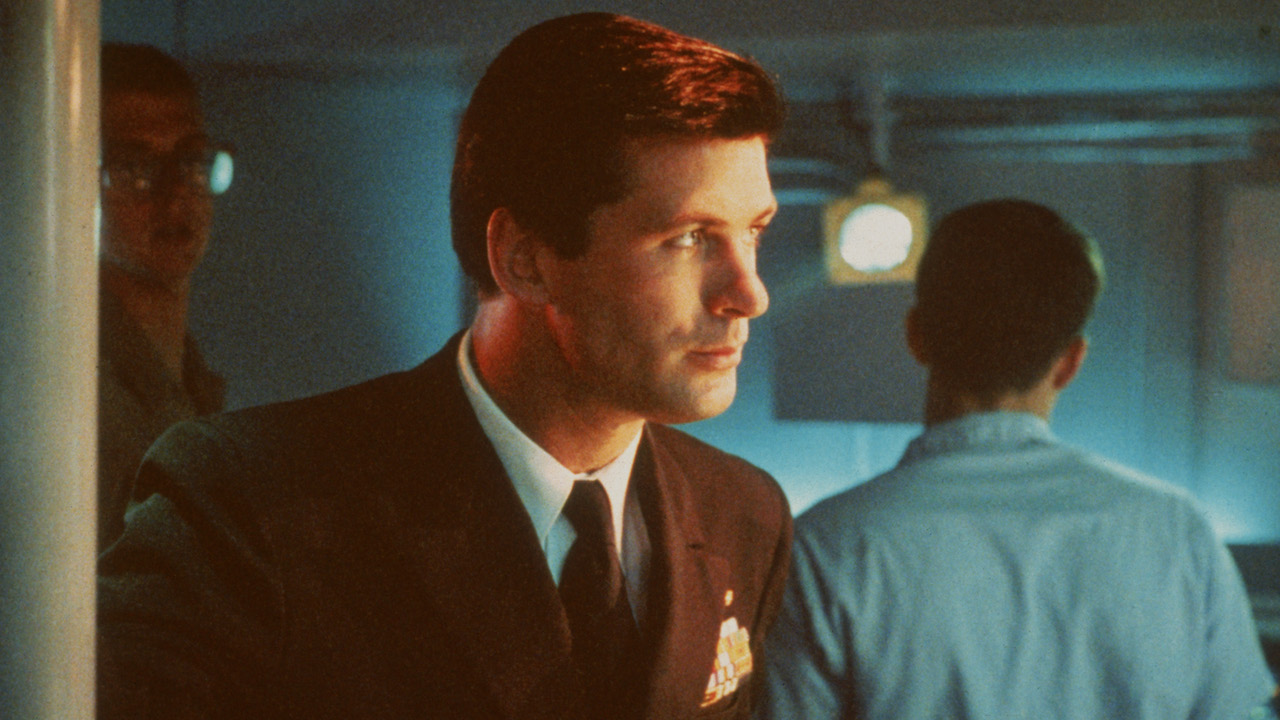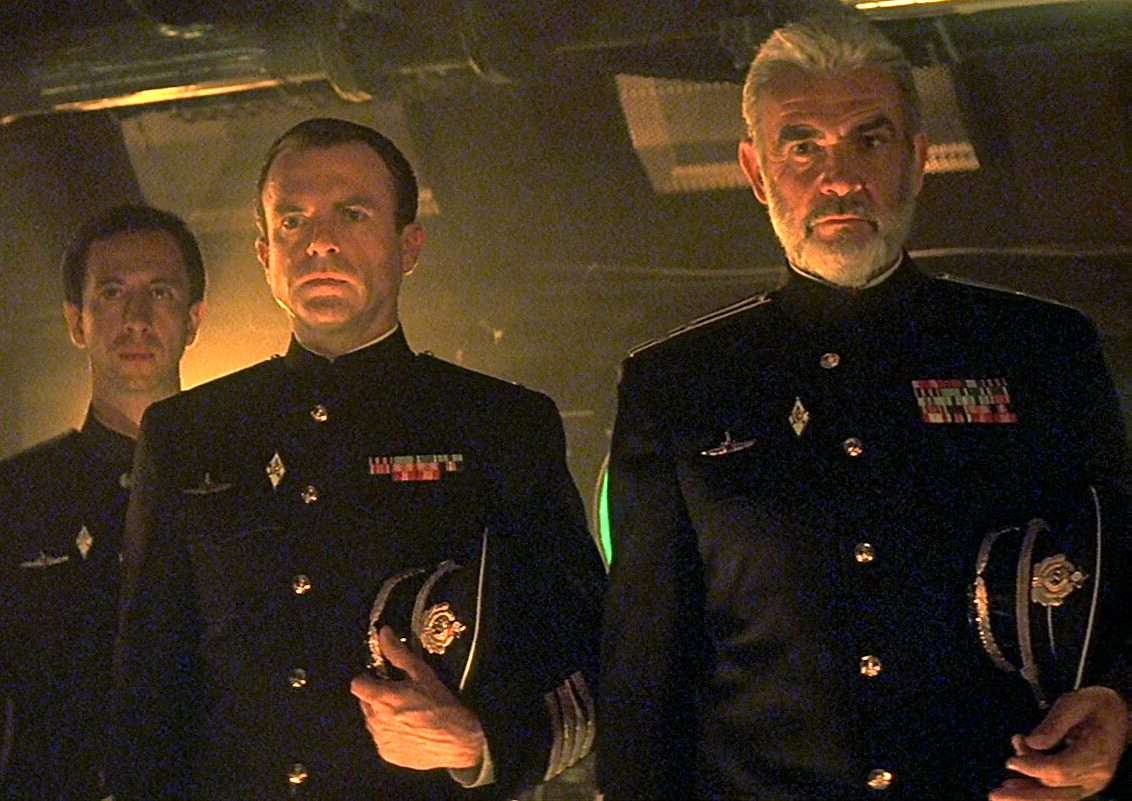The Hunt for Red October (1990)

The Hunt for Red October (1990) is a thrilling Cold War espionage film based on Tom Clancy’s 1984 novel of the same name. Directed by John McTiernan, the film features Sean Connery as Soviet submarine captain Marko Ramius and Alec Baldwin as CIA analyst Jack Ryan. Set in 1984, at the peak of Cold War tensions between the United States and the Soviet Union, the film tells the story of a high-stakes naval chase across the Atlantic, centering on trust, deception, and the hope for peace amidst mutual suspicion.
The plot kicks off when Captain Marko Ramius, a highly respected Soviet naval officer, takes command of Red October, a state-of-the-art nuclear submarine equipped with a revolutionary propulsion system known as a “caterpillar drive.” This technology renders the submarine nearly undetectable, which could allow it to get dangerously close to U.S. shores without being detected. The Soviet government intends to use this powerful submarine as a tool of intimidation, signaling its military superiority to the world. However, Ramius has other plans—plans that involve defecting to the United States and escaping his life in the Soviet Union.

Unbeknownst to his superiors, Ramius has written a letter declaring his intention to defect, knowing it would be intercepted and lead to the Soviet navy pursuing him. His motivations are complex: disillusioned by the Soviet regime and haunted by personal losses, Ramius no longer believes in the oppressive system he serves. Determined to use Red October as a peace offering, he intends to deliver the submarine to the Americans, but the risk is enormous. He not only has to evade Soviet forces intent on preventing his defection but also convince the Americans of his intentions before they assume he is attacking.
Enter Jack Ryan, a young and brilliant CIA analyst who specializes in Soviet military strategy. When intelligence about Red October’s capabilities and Ramius’s unusual movements surfaces, the U.S. government and military initially see the submarine as a grave threat. However, Ryan, after analyzing Ramius’s background and motives, believes that Ramius is defecting rather than planning an attack. Despite skepticism from his superiors, Ryan is given a limited window to prove his theory before the U.S. Navy takes hostile action against Red October.
Ryan’s race against time is the film’s central tension. As he boards an American submarine and communicates with the U.S. Navy fleet, he must piece together clues and make contact with Ramius. The film brilliantly depicts the two men as intellectual equals, each engaged in a dangerous cat-and-mouse game with the fate of nations hanging in the balance. Connery’s portrayal of Ramius captures the character’s gravitas and weariness, while Baldwin’s Ryan is sharp, determined, and resourceful, despite his relative inexperience in the field.
The tension builds as both the U.S. and Soviet navies close in on Red October, with misunderstandings and near-misses creating a palpable sense of danger. The underwater scenes are visually gripping, combining the claustrophobic atmosphere of submarine warfare with suspenseful sound design. The sonar pings, quiet hums of engines, and silence at crucial moments add a layer of intensity, amplifying the stakes of each decision made by the characters.
In a climactic sequence, Ryan successfully boards Red October and communicates with Ramius, confirming his intentions. However, the danger is far from over. A Soviet operative aboard Red October, committed to stopping Ramius at all costs, sabotages the submarine, leading to a heart-pounding showdown as Ryan, Ramius, and their crews work together to save the vessel and secure Ramius’s defection. This moment of cooperation between the Soviet defectors and the American crew symbolizes a glimmer of hope for mutual understanding, even in the most unlikely of circumstances.
The Hunt for Red October is not just an action thriller; it also explores the themes of loyalty, ideology, and the moral complexities of defection during a period defined by rigid political alignments. Ramius’s character reflects the inner conflict of individuals who question their roles within powerful institutions, while Ryan’s role as an analyst-turned-hero highlights the importance of insight and empathy in understanding one’s adversaries.
The film’s meticulous direction by McTiernan, combined with Jan de Bont’s cinematography, creates a tense, realistic portrayal of submarine warfare, with careful attention to both the technological details and human dynamics. The soundtrack, composed by Basil Poledouris, complements the film’s epic scale and dramatic stakes with a score that blends tension and a sense of noble purpose.
The Hunt for Red October received critical acclaim and remains a standout in the military thriller genre, praised for its intelligent narrative, suspenseful pacing, and strong performances. Connery’s portrayal of Ramius, in particular, was celebrated for capturing the character’s depth and inner conflict. Baldwin’s take on Jack Ryan paved the way for future adaptations of Clancy’s character, who would become an enduring figure in American espionage fiction.
Ultimately, the film embodies a classic Cold War tale: a story of ideological struggle, the pursuit of peace, and the risks individuals take to do what they believe is right. The Hunt for Red October is a gripping, intelligent thriller that explores the possibility of understanding between enemies while delivering a suspenseful and technically impressive cinematic experience.











